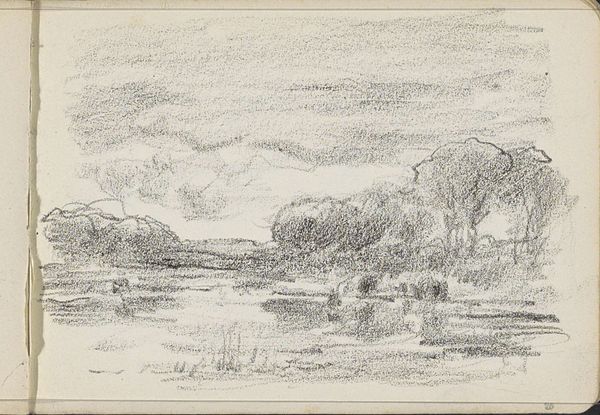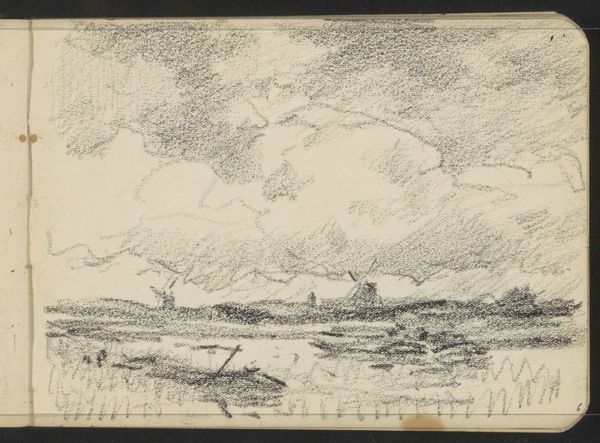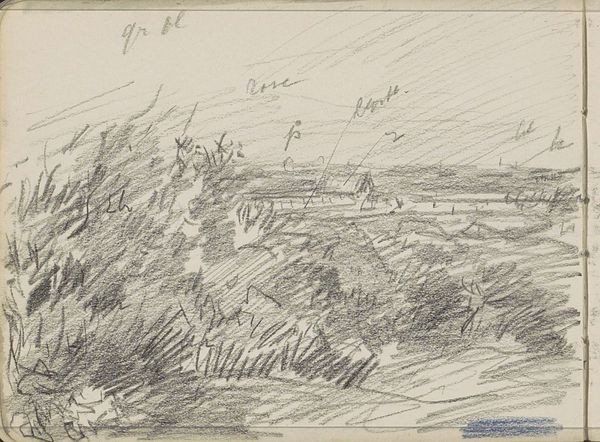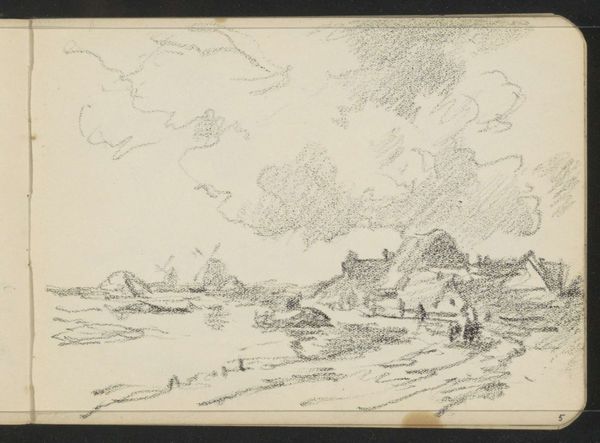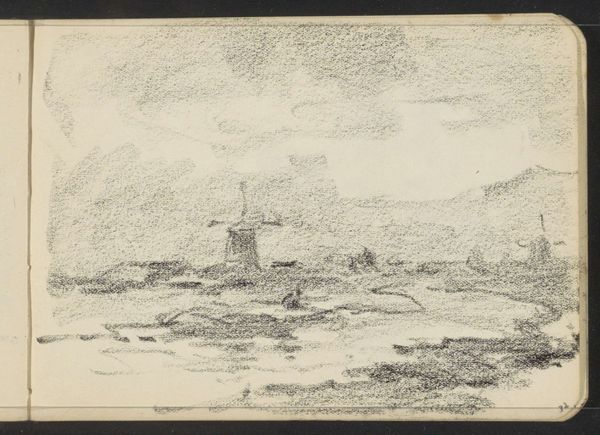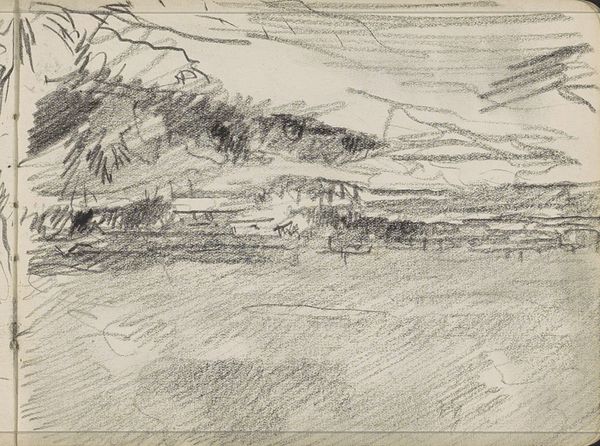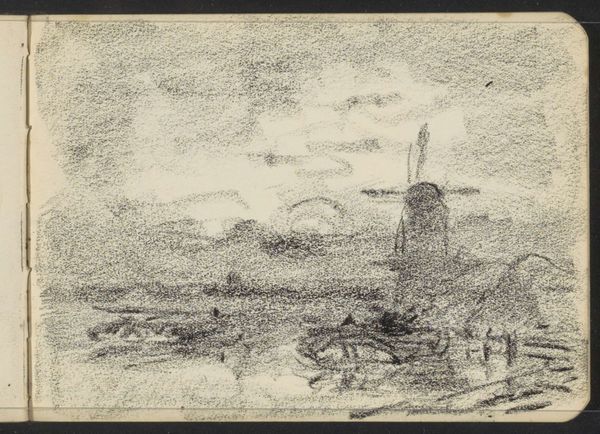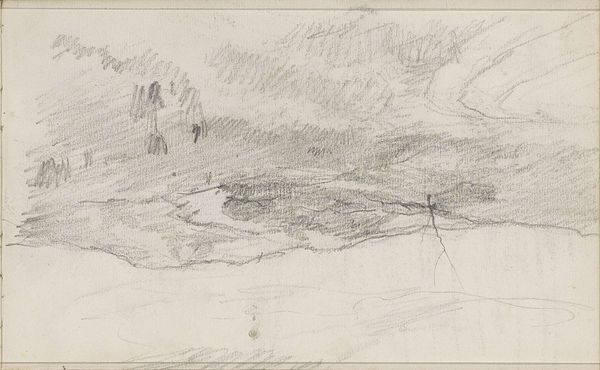
Dimensions: height 116 mm, width 162 mm
Copyright: Rijks Museum: Open Domain
Editor: This pencil drawing, "Landschap met molens" by Willem Cornelis Rip, was made sometime between 1905 and 1910. I'm immediately struck by its understated quality; the repetitive marks used to represent land and sky create a dense, almost woven texture. What's your perspective? Curator: Considering this landscape through a materialist lens, I find myself drawn to the act of its creation. The repetitive use of pencil strokes becomes a record of labor. We can consider how the material properties of the pencil and paper, the very means of production, shape the artistic outcome and, therefore, our perception. Do you think this repetitive motion evokes the cyclical labor inherent in agrarian societies? Editor: That’s interesting. I was focusing on the atmospheric effect, but I see what you mean about repetitive labor. Are you suggesting the artist intended to convey this through the process? Curator: Intention is secondary. Consider the socio-economic context. Windmills were integral to Dutch industry and agriculture, and therefore people's livelihoods. Rip is representing that with this specific, and, it seems, somewhat monotonous mark-making. Do you think he's perhaps responding to an industrialised society which removes labor even further from natural processes? Editor: Maybe. Or maybe he’s simply working with the tools at hand and capturing a landscape rapidly changing because of those industries? Seeing this drawing as a product of both natural materials and industrial tools makes me think about artistic skill in relation to broader production methods. Curator: Exactly. The interplay between the handmade mark and the mechanically reproduced image, something we often overlook, defines art-making throughout history. Thanks, it seems that thinking about the material realities in art opens unexpected avenues for dialogue. Editor: It definitely provides new ways to approach an image!
Comments
No comments
Be the first to comment and join the conversation on the ultimate creative platform.

